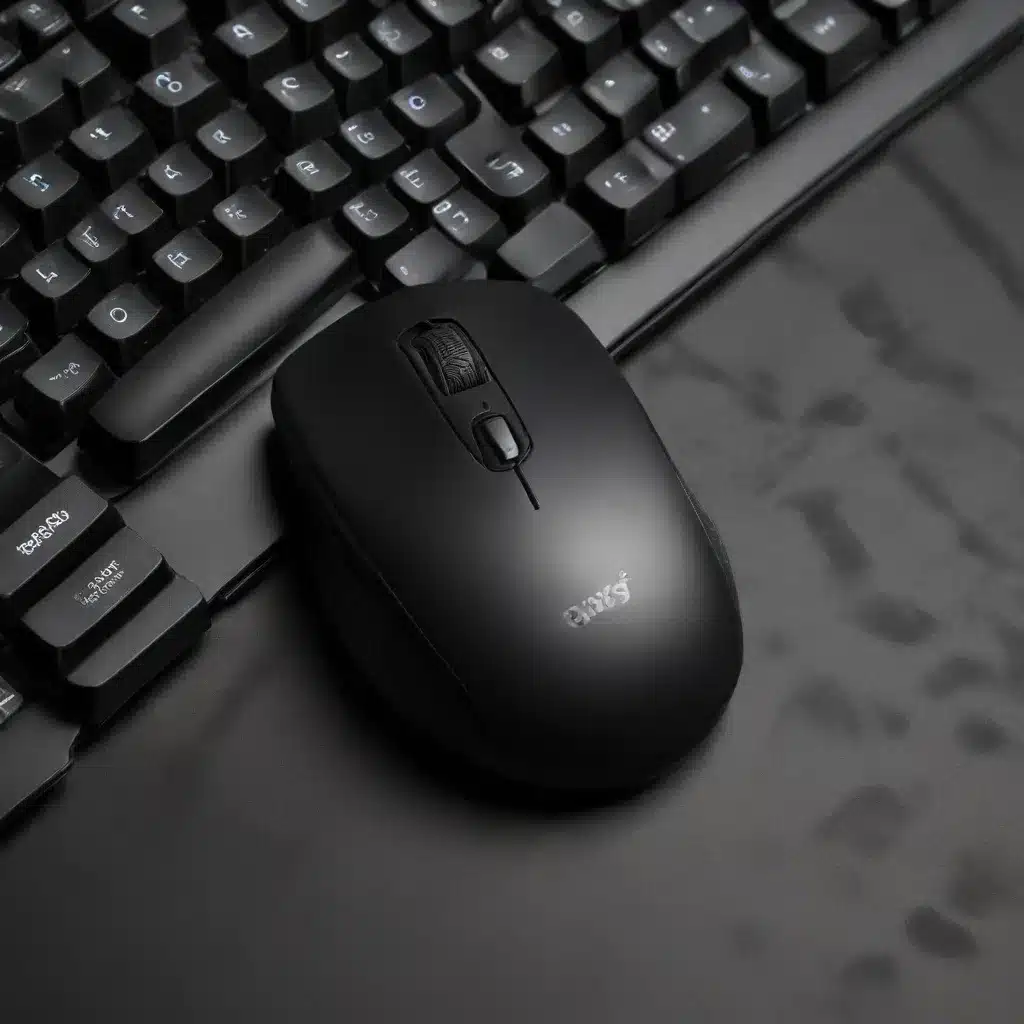
As a seasoned IT professional, I’ve encountered my fair share of wireless keyboard and mouse connectivity issues over the years. While these wireless input devices offer the convenience of a clutter-free workspace, they can sometimes be prone to connectivity problems that can frustrate both users and IT support staff. In this comprehensive guide, I’ll share practical tips and in-depth insights to help you troubleshoot and resolve common wireless keyboard and mouse connectivity problems.
Identifying the Connection Type
The first step in troubleshooting wireless keyboard and mouse issues is to determine the type of connection your devices are using. There are three main connection types to be aware of:
-
Bluetooth: Bluetooth keyboards and mice connect directly to your computer’s built-in Bluetooth functionality, typically without the need for a separate dongle.
-
Wireless USB: Wireless keyboards and mice connect to your computer using a wireless USB dongle that plugs into a USB port.
-
Wired: Wired keyboards and mice connect directly to your computer using a USB cable.
Knowing the connection type will help you identify the appropriate troubleshooting steps to follow.
Troubleshooting Bluetooth Connections
If you’re using Bluetooth-enabled wireless keyboards and mice, here are some steps to help you troubleshoot connectivity issues:
-
Check Bluetooth Pairing: Ensure that your Bluetooth devices are properly paired with your computer. Open the Bluetooth settings, turn Bluetooth on, and look for your keyboard and mouse in the list of paired devices. If they’re not there, try pairing them again.
-
Update Bluetooth Drivers: Outdated or incompatible Bluetooth drivers can cause connectivity problems. Check with your computer manufacturer or the device manufacturer’s website for the latest Bluetooth driver updates.
-
Check Bluetooth Compatibility: Ensure that your computer’s Bluetooth version is compatible with your wireless devices. Most modern Bluetooth keyboards and mice require Bluetooth 4.0 or later.
-
Replace Batteries: Low battery levels can cause Bluetooth devices to disconnect or respond slowly. Replace the batteries in your keyboard and mouse with fresh ones.
-
Disable Airplane Mode: Turning on airplane mode can sometimes interfere with Bluetooth connectivity. Toggle airplane mode on and off to see if that resolves the issue.
-
Disconnect Other Bluetooth Devices: Having too many Bluetooth devices connected to your computer at once can lead to interference. Try disconnecting any unnecessary Bluetooth devices and see if that improves the performance of your keyboard and mouse.
Troubleshooting Wireless USB Connections
If you’re using wireless keyboards and mice with a USB dongle, consider these troubleshooting steps:
-
Check Dongle Placement: The placement of the wireless USB dongle can significantly impact the connection quality. Try moving the dongle to a different USB port, preferably one closer to the keyboard and mouse.
-
Avoid Interference: Wireless devices can be susceptible to interference from other electronic devices, such as wireless routers, cordless phones, and microwave ovens. Ensure that the dongle and your wireless devices are not placed near any potential sources of interference.
-
Replace Batteries: Low battery levels can cause wireless USB devices to disconnect or respond slowly. Replace the batteries in your keyboard and mouse with fresh ones.
-
Unplug and Replug the Dongle: Try unplugging the wireless USB dongle and then plugging it back in to see if that resolves the connection issue.
-
Test on Another Computer: If possible, try using your wireless keyboard and mouse on a different computer to determine if the issue is with your current computer or the devices themselves.
-
Update Drivers: Ensure that you have the latest drivers installed for your wireless USB devices. Check the manufacturer’s website for any available driver updates.
Addressing Specific Wireless Keyboard and Mouse Issues
In addition to the general troubleshooting steps, there are a few specific issues you may encounter with wireless keyboards and mice, and their respective solutions:
Delayed or Missed Keystrokes
-
Check Battery Levels: Low battery levels can cause delayed or missed keystrokes. Replace the batteries in your wireless keyboard.
-
Disable Power Saving Features: Some wireless keyboards and mice have power-saving features that can cause a delay in response when the device wakes up from sleep mode. Adjust the power settings or disable these features if possible.
-
Optimize Wireless Signal: Ensure that the wireless USB dongle is placed in an optimal position, away from potential sources of interference, to improve the signal strength and reduce latency.
Scrolling Issues
-
Enable Wheel Scrolling: In the Mouse and Keyboard Center software, ensure that the vertical scrolling option is enabled for your wireless mouse.
-
Disable Wheel Button: If you’re experiencing unintended window switching when scrolling, you can disable the wheel button in the Mouse and Keyboard Center to prevent this behavior.
-
Check for Software Incompatibilities: Some applications may not fully support the scroll wheel functionality. Try troubleshooting the issue within the specific software you’re using.
Firmware Updates for Microsoft Ergonomic Keyboards
If you’re using a Microsoft Ergonomic Keyboard, you may encounter issues with the number pad functionality. This can be resolved by updating the keyboard’s firmware to the latest version using the Mouse and Keyboard Center software.
Wired Devices as a Reliable Alternative
While wireless keyboards and mice offer convenience, they can sometimes be prone to connectivity issues. If you’re experiencing persistent problems, consider using wired devices as a more reliable alternative. Wired input devices typically provide a stable and consistent connection, eliminating the potential for wireless interference or battery-related issues.
Conclusion
Troubleshooting wireless keyboard and mouse connectivity problems can be a nuanced process, but by following the steps outlined in this guide, you’ll be better equipped to identify and resolve common issues. Remember to consider the connection type, check for interference, update drivers, and replace batteries as needed. If all else fails, a wired solution can often provide a more stable and dependable alternative.
For more IT troubleshooting tips and technology insights, be sure to visit https://itfix.org.uk/. Our team of seasoned IT professionals is dedicated to providing practical solutions and in-depth analysis to help you optimize your technology setup.












